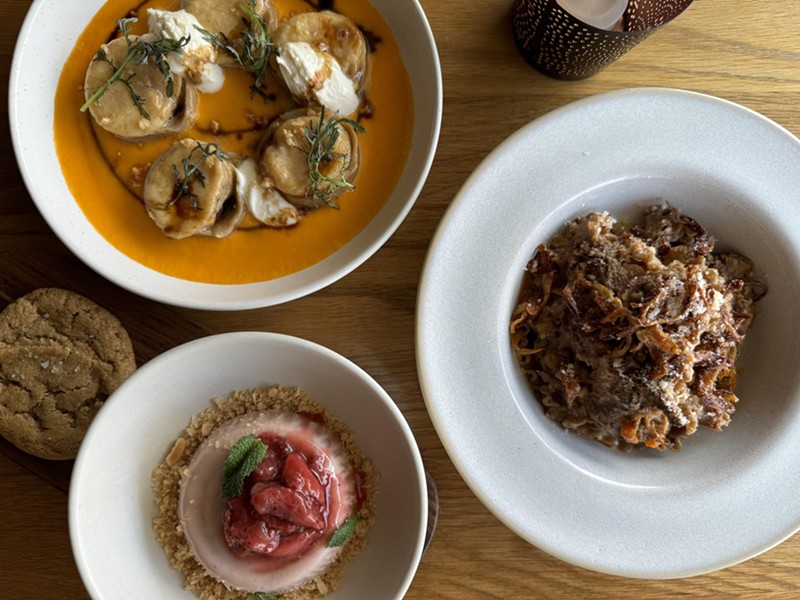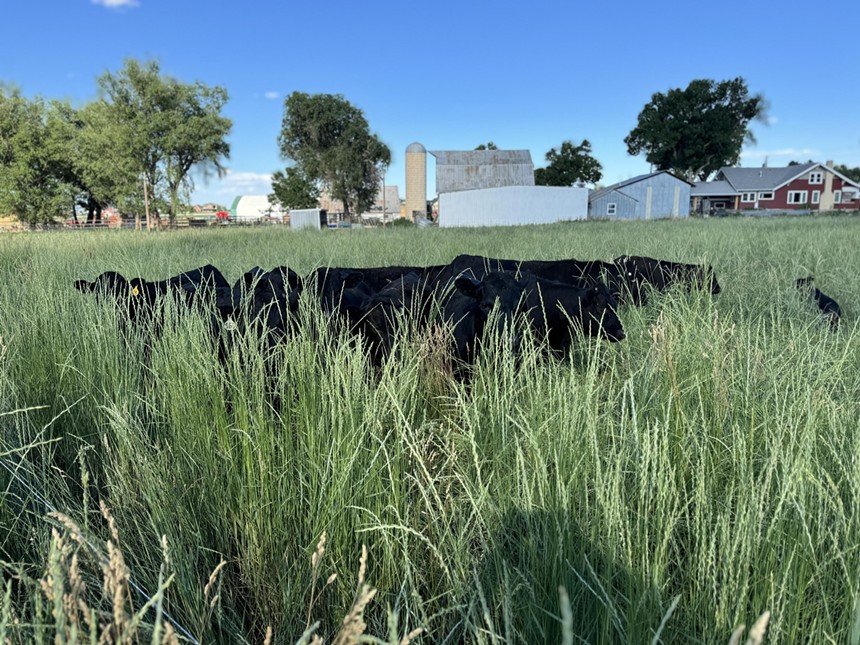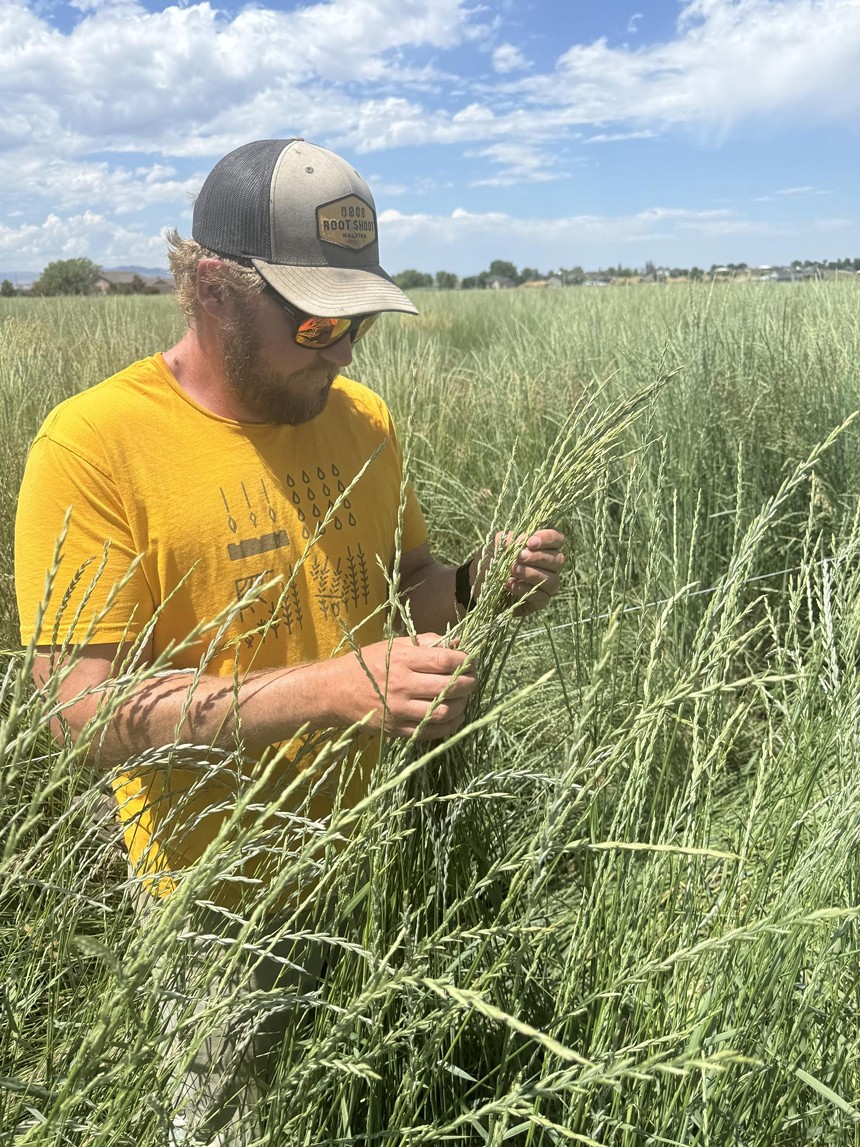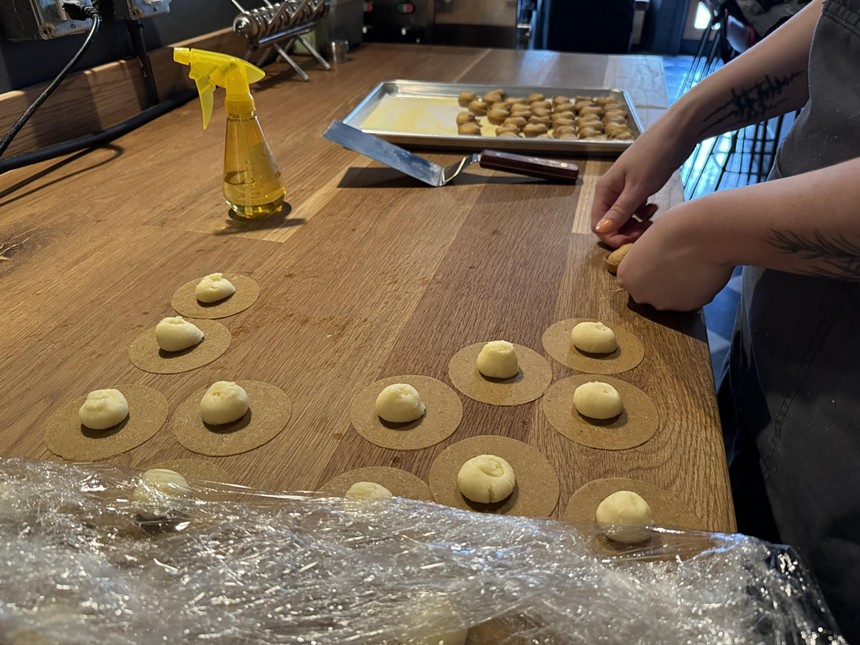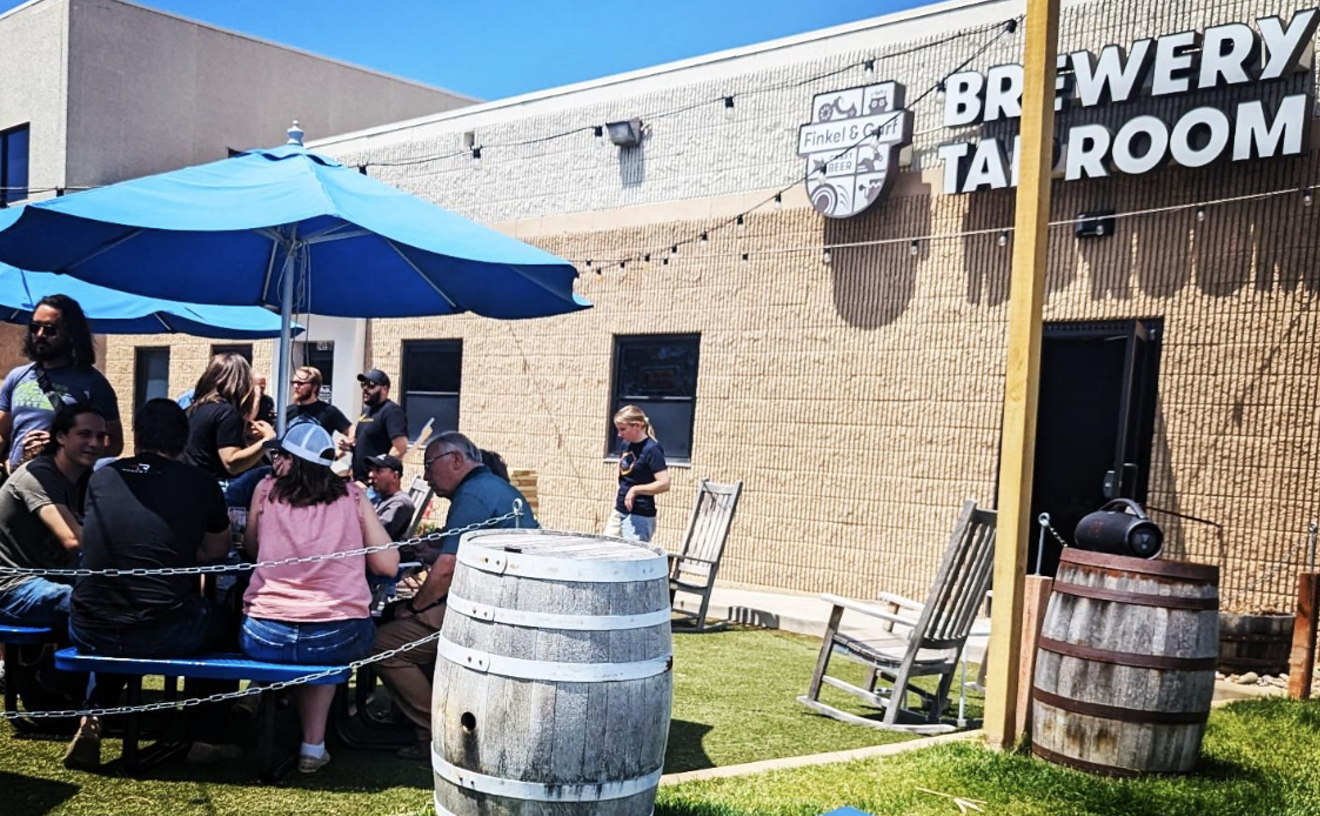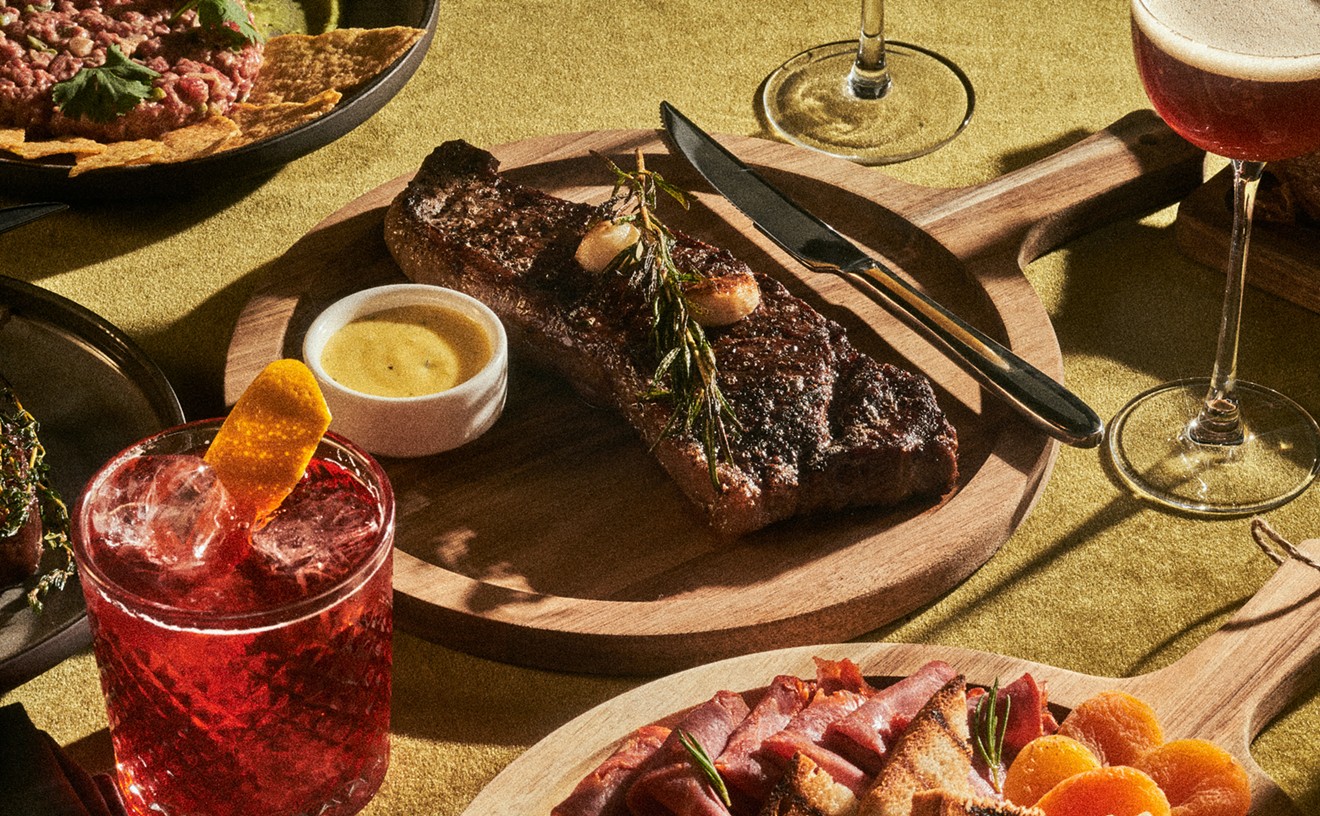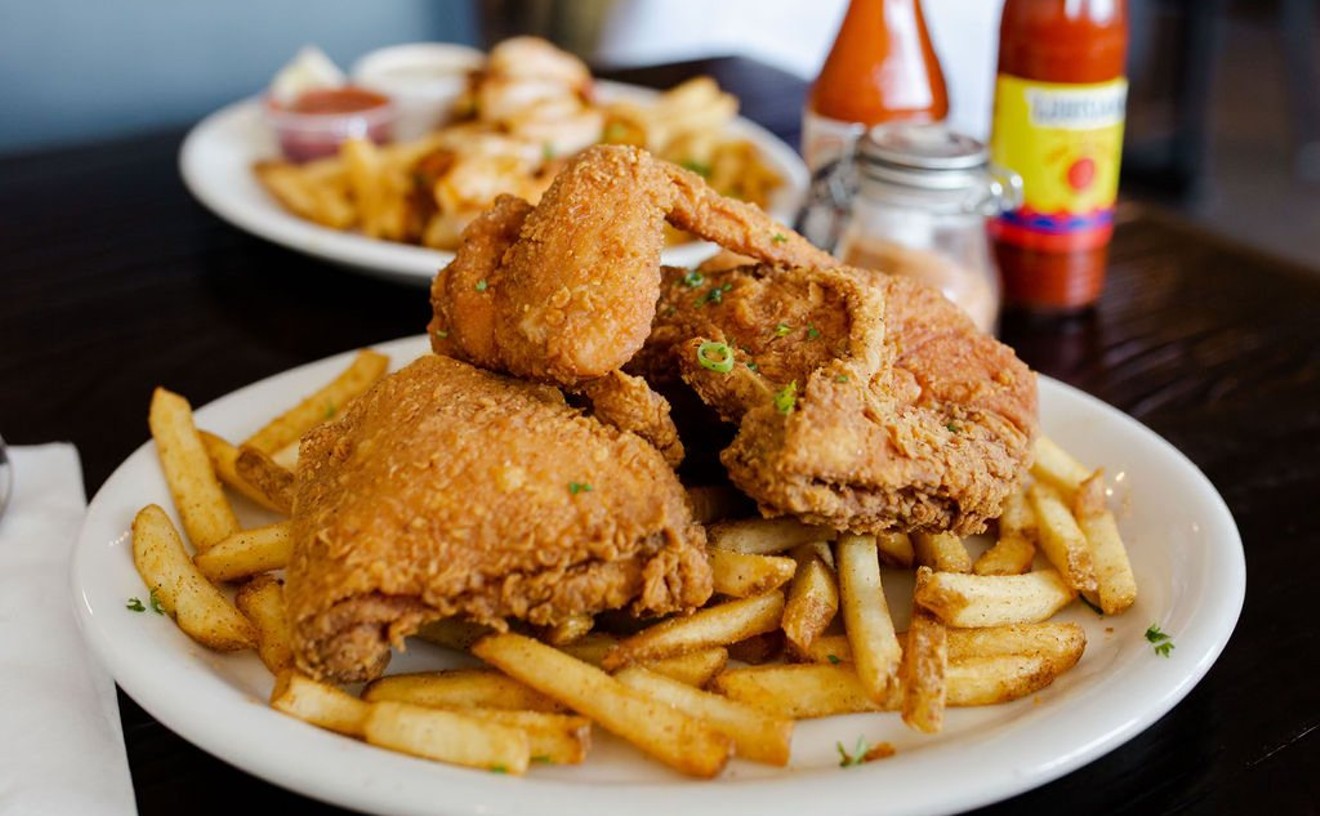That's the focus of a new tasting menu available throughout July. For the entire month, Restaurant Olivia is serving a perennial grains five-course tasting menu for $115 per person with optional alcohol pairings. Reservations are available online, and the menu is also available for walk-ins.
Pasta, Leon notes, is a labor of love. A single hand-folded tortellini takes 2.5 seconds to make, “and then there are fifteen tortellini that go onto a plate. It just all kind of adds up to a lot of work, and it’s like, how do you make this work? How do you make it feasible for somebody to spend four minutes making one portion of pasta? And then you multiply that by 150 people,” he says.
It took him years before he and the staff nailed down the process, and then they began experimenting with different flours and grains. “It’s a challenge. It gets us to break out of what we’ve been doing for four and a half years and try something slightly different. But to go even deeper, we’re using flours that are super sustainable,” Leon says.
He adds that the entire staff was inspired by their annual trip to Italy, where they saw firsthand “how sustainable everything and everyone is. ... Did you know they have a zero-single-use-plastic certification?”
The team started thinking of ways to bring a zero-single-use-plastic tasting menu to Restaurant Olivia, but the implications quickly became overwhelming. What would they use instead of gloves? Could they source local Parmesan cheese that could be delivered without plastic wrap? While they hope to be able to offer such a menu one day soon, Leon knew they needed to do something slightly less ambitious now.
Olivia was already using Sustain-A-Grain, so the team decided to reach out to the Land Institute, a nonprofit organization founded in 1976 that is devoted to researching and popularizing perennial grains. Perennial crops fall into a sub-category of regenerative farming; they are crops that farmers can plant once and harvest for many years without replanting. “Having that living root in the soil year-round is really important for reducing erosion, cleaning water and also sequestering carbon,” explains Tessa Peters, the organization's director of crop stewardship. “Because an annual crop dies every year, even if you’re not tilling, they’ll be dead roots and decomposing, and they’re not really holding soil in place or contributing additional nutrients and organic matter.”
Most fruit trees are perennial crops, but the Land Institute is solely focused on perennial grains, which account for 70 percent of the calories in a normal diet. Peters's team of scientists either try to make hybrids with a traditional crop and a perennial or figure out how to domesticate an existing perennial plant. Their biggest success has been Kernza, a grain harvested from wheatgrass. It’s decidedly still in a proof-of-concept phase but is already grown on a few thousand acres across America by farmers like Todd Olander, owner and founder of Root Shoot Malting.
Olander Farms is a fifth-generation farm in Loveland that will turn 100 years old in 2026. It grows alfalfa, barley, corn, rye and wheat, and half of its fields are devoted to the malting and brewery industry. It started shifting to regenerative practices four to five years ago and was attracted to perennial crops because of the reduction of erosion and tractor passes. The change was also made “out of necessity for us because of the water shortages," Olander notes. "[These] smaller grains, they require less water and offer another avenue to save water and produce a crop."
But not all farmers think like Olander. “With pesticides and GMOs, [it’s] kind of been an easy button just to continue to do it the way they’ve always done it,” he says. The standard farming practice is to “have a nice bare field to plant. But all our fields have a bunch of living things on them when we go in and plant, and so it just doesn’t seem normal. ... It’s like not socially acceptable. Yeah, our neighbors would probably consider us a little bit nuts.”
Perennial grains are still experimental; yields are much less and more variable than traditional crops, and a significant portion of the Land Institute's research money is devoted to increasing the yield. "Based on our yield gain projections, we expect that in the next fifteen years, we will have yields comparable to wheat fields,” Peters says. But currently, the low-yield rates mean Kernza is ten times more expensive than typical "00” flour.
Another barrier: There’s no market demand for perennial grains. Last year, Olander Farms planted 35 acres of Kernza and has started looking to market the regenerative grain to its malting and brewery partners. “We’re really looking at how we make perennial grains staple foods...meaning people want to eat them, people are culturally attached to them and they provide high nutritional value to people,” says Peters. “Our partnership with Restaurant Olivia gives us that opportunity to showcase that these grains are delicious, that they are exciting. ... [This] allows people to really engage with the entire network of their food.”
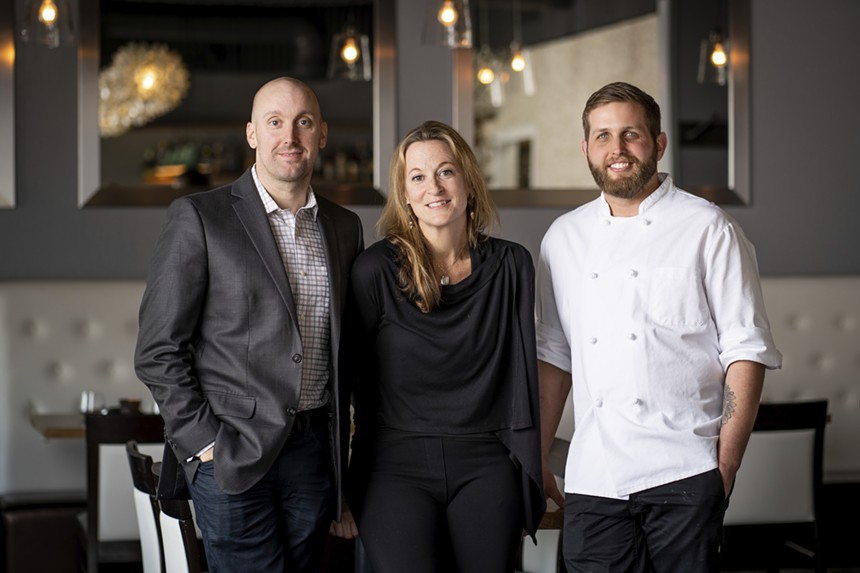
Olivia's beverage director Austin Carson (left), hospitality director Heather Morrison and executive chef Ty Leon.
Joni Schrantz
A dedicated tasting menu “allows us that extra ten seconds with the guests to talk about the Land Institute, to tell them that story,” explains Leon. “Stories are a big thing for us. It allows us to connect with our guests a little more. ... Somebody who comes for this tasting menu might be more open or have a little bit more time to learn about what the Land Institute is doing and how we are trying to be good stewards.”
The menu took a bit of trial and error; as Leon quickly learned, it’s not a one-for-one swap of flour for perennial grains. “What proportions are we using? And how does it react with the filling? How does it react with the sauce we put it with? And these grains take a lot more moisture as well,” he adds, "so needing to find that balance of too many eggs. Is this too many yolks? No, this is too dry.”
And then there’s the flavor difference. A standout dish on the menu is the Kernza tajarin (a ribbon-like long noodle) with lamb ragu and crispy onions. The sweetness of the tomatoes in the ragu accentuates the nutty, “baked” flavor of the Kernza pasta. It’s bougie comfort food that doesn’t leave you too stuffed to continue indulging.
Another highlight is the summertime-appropriate silflower (a perennial wildflower) honey panna cotta served on popped sorghum and topped with strawberry preserves. It's served with a Kernza cookie that you can use to scoop up the panna cotta.
Unless you're laser-focused on the subtle flavors of the perennial grains, you won't notice much difference between these pasta dishes and ones made with typical flour. And that’s kind of the point — to introduce customers to perennial grains and show that using them doesn't affect taste or quality.
Because of the experimental nature of many of these grains, they might only be available to taste for this month. However, Restaurant Olivia aims to keep using as many of the Land Institute's grains as possible even after this tasting menu wraps.
“We didn’t realize it until we started using these [perennial grains], but the flour we normally use that’s readily available is actually quite bland,” Leon concludes. “We were lucky to get these super-special ingredients and work with them. We still have a good amount of them left, but once they're gone, they're gone.”

